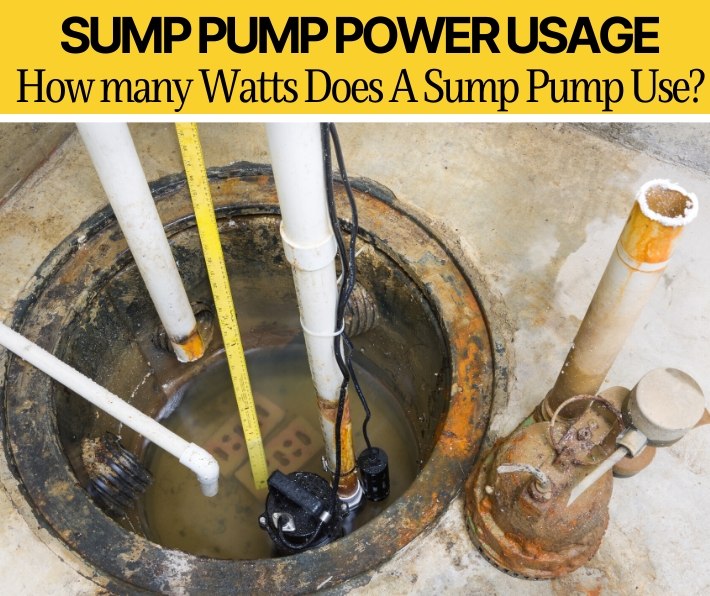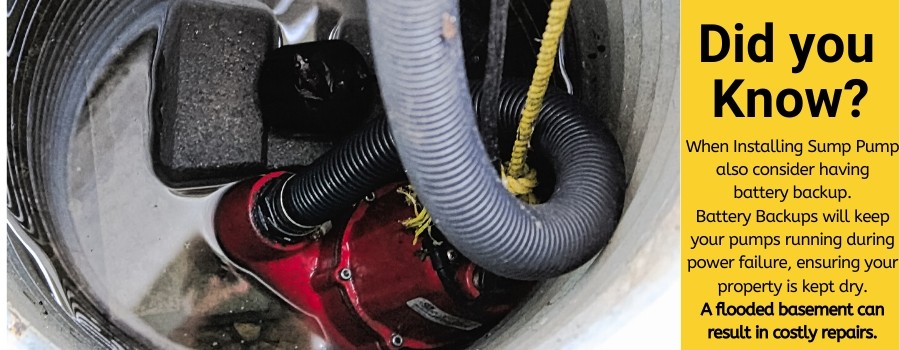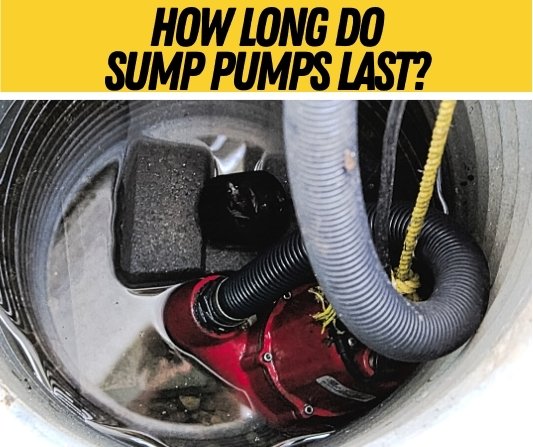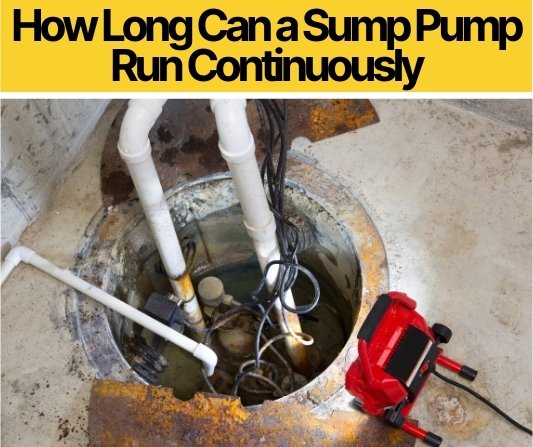 Today we’re looking to answer all the core information to do with the benefits, size and power of a sump pump in your home.
Today we’re looking to answer all the core information to do with the benefits, size and power of a sump pump in your home.
Primarily we’re going to make some comparisons between the typical sump pump models, ranging from 1/4 hp all the way to 1 full unit of horsepower.
We’re also going to see what size generator you’ll need to run your pump.
How Many Watts Does a Sump Pump Use?
Sump Pump power usage depends on the size of the sump pump you have, a small 1/4hp Sump pump will usually use around 600 watts and require around 3.5-4 amps, while a larger 1hp sump pump will use as much as 2000 watts and 10amps.
If you plan to run your sump pump from a generator it’s crucial that you size up the two perfectly and have enough power to actually run your sump pump.In this Article we will also see How to choose a generator for your sump and things you should be aware of, as well as find out if a sump pump requires a dedicated circuit and how much exactly does it cost to run your sump pump.
1 hp sump pump
We’ll start by the strongest 1 horsepower sump pump which would be suitable for heavy-duty applications specially for people living in high water table areas. As this is the highest level of horsepower the sump pump will require around 2,000 watts depending on the make and model.
¾ hp sump pump
As expected, this model uses less wattage but is still a very powerful pump and will provide around 20-25% Increase in pumping capacity over 1/2hp Sump pump. This type of sump pump will usually be around 1,500 watts again depending on the exact make and model.
½ hp sump pump
1/2hp Sump Pumps are the most popular for domestic use, and will be perfect for the average sized home. A 1/2hp Sump pump will typically run at around 1000-1050 watts, depending on make and model.
¼ hp sump pump
The smallest but not-to-be-discounted as they are still perfectly capable if you do not live in problematic areas sump pumps runs at around 550-600 watts, depending on make and model.
Remember, with sump pumps the most important thing is factoring in how big the size of your basement is as well as what size is most applicable to reducing the amounts of excess water you might have.

How many amps does a typical sump pump use?
In terms of amps usage for sump pumps that are running, we’re going to analyse the same sizes.
The 1hp sump pump should be running at around 10 amps
The ¾ sump pump should be running at and using around 8 amps
The ½ hp sump pump runs at 6 amps.
The ¼ hp sump pump being the smallest runs at 3.5-3.8 amps.
Backup sump pump power draw.
It’s important to note that the sump pump doesn’t really have a specific shelf-life as the current models are more commonly made in plastic, unlike more antique models which are more metallic and prone to rust. It’s strongly recommended even if you have a new model, for pure security or peace of mind to have a backup pump. So, of course the general consensus is that a backup is a very good idea to avoid a potential catastrophic situation if sump pump sell out during storms or other weather related problems. Especially if you’re on vacation, it’s a great idea for peace of mind (and the health of both your home and mind – think mould and damp lingering above your foundations) to install a generator backup sump pump, which runs at around 9 amps.
Does a sump pump need a dedicated circuit?
The short answer – yes, you should have both a dedicated circuit in the form of a Ground Fault Circuit Interrupter (GFCI). There’s a dual purpose for this. The circuit breaker is to make sure the breaker isn’t tripped and the interrupter is essential to prevent electrial shocks (as we know water and electricity can be a lethal combination), so the combination provides consistency and security.
Sump pump keep tripping the breaker
So you’ve installed a circuit breaker, as well as a interrupter, however, this question is especially relevant when you keep experiencing technical problems. So let’s note all the potential problems with the breaker. As mentioned you should connect the pump to an electrical outlet that has its own powered circuit breaker (or fuse, both are fine), but a circuit interrupter is essential too as a sump pump shouldn’t trip a GFCI if there are no major electrical problems with power surges or the physical quality of the pump.
Other reasons you may experience a break in the circuit are logical, however, luckily, they are easy to prevent with regular checkups. It’s often the case that many forget about and neglect their sump pump which is why we’re listing these simple hints. Water may have got into the electrics and/or the connector switch, so it’s important to check the seal of the sump pump from time to time as they sometimes become unsealed if the moisture affects the pump. The pump impeller may also be clogged with debris and dirt, depending on the volume of activity, especially if the sump pump has been running continuously over a number of days. Another element to consider is if you’re using an extension cord that might not be heavy enough in comparison to the deepness of the rainfall. A good quality cord is essential, so scrimp on the cord at your peril. Make sure also to check your electrical wiring in case of general fraying and wear and tear, and if you have light wiring which isn’t strong enough for the pump as well.
As you can see, there are many factors to consider and a few bits of general admin to consider to avoid tripping the breaker. The final point, and potentially the most obvious: the age of your sump pump, maybe it’s long in the tooth and needs to be replaced. As a general rule cheaper models may be difficult to repair and older ones difficult to repair in an economical manner. Although, that said the vast majority of current models are of plastic, so are extremely durable.
Starting watts vs running watts for Sump Pumps
The general consensus is that the extra watts should be only between 3-5 seconds. I’ll mention here the prices to put into context those three-five seconds, which will affect your sump pump, as well as the generator.
A 1 hp model should take around 4,000 watts to start, which is a regular high amount and something to consider for your electricity bills.
A ¾ hp model should use around 3,000 watts to get started.
A ½ hp model needs 2,150 watts to start.
The smallest 1/4 models takes 1,050 watts to get started, so the comparison is fairly clear, each ascending model requires 1,000 watts more to start up!
Generators for sump pump – what size generator do I need to run a sump pump?
A very important question for your size pump! As you probably expected the higher the horsepower the larger the generator is the general rule, so consider first the level of horsepower before focusing on generators.
1/3 hp sump pump
The starting wattage for that size is 1,300 watts which fits nicely between the ¼ and ½ sizes. The average running watts is 800, again inbetween the two sizes, so you’ll need a generator that provides that degree of power. You would want a generator that can generate around 4,000 watts in running energy and 690 in starting energy for a 1/3 model.
½ hp sump pump
For a ½hp model you’d want 4,715 watts in running energy and 920 watts in starting energy.
1 hp sump pump
Finally, depending on the volts available, on a 1hp model of 115v you’ll need 7,500 of running power and 1,440 watts in starting energy, and with a 230v model, 7,200 in running energy and 715 in starting energy.
And now some good rules for the generator.
Make sure you have one in good condition and free of defects because you won’t want to repair it when you have just recently installed it. Make sure the air filter is clear and check the oil as well. You should also install your generator around 15 feet from doors and windows in case there are any fumes eminating from the generator, which could affect negatively humans as well as pets. If it’s difficult to have the generator in a more open area it makes sense to install an exhaust for the generator to get the fumes into an external area, which sounds like more work but is a necessary precaution. As mentioned with the circuit breaker, try to avoid a cable that can’t pick up the slack, so it’s a good consideration to measure the distance between the generator and the sump pump.
Once you have added fuel to your generator you just need to make sure the generator is connected to the sump pump and that in the initial test with water, as the water levels are increasing, the water is being relocated outside of the house and the pump is fulfilling its brief. If all goes well you know you have a working generator.
Typical sump pump power draw & costs
A ½ hp pump could cost as much as $1000 to install, which includes any additional pipework, excavation and the services of the technician. However, as the average cost of a sump pump itself are around $100 depending on the model, it normally is much more more economical than that to install one. Under special circumstances you may have to pay more if the excavations are more complex, however that is only if the foundations are particularly delicate. Normally a fee of around $400 is common if the job is cut and thrust.
How much electricity does a sump pump use per day?
At peak times the sump pump will be on for as many as three consecutive days, depending on the water level. That is a median amount of time for heavy rainfall, Chances are that you’ll use your sump pump in the Winter and Spring months, as well as occasional usage for flash floods more common in Summer and Autumn. It can take around 3 days if downpours are intense to clear excess water, so a powerful sump pump, for example at ½ hp should be around $0.15 each hour meaning if it’s on 24 hours will cost $3.60, however it’s more likely the average cost will be that price per month.
The basic equation should be, for example, with the ¼ wattage, 600 divided by 1000 watts (to make the kilowatts) multiplied by the price per kilowatt, so it should be 0.60 x each hour, with an average usage of around an hour a day.. Let’s take the strongest horsepower model as an example with the full unit, 2,000 watts divided by 1000, so 0.5 x each hour, which means 12 dollars if running 24 hours per day. Therefore it’s essential you choose the right model for your house, as a weaker model may eventually use more power.






